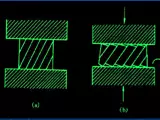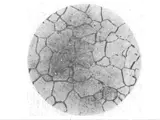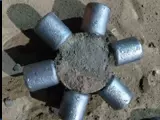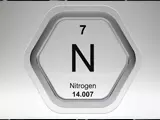Introduction
The study of the effects of radiation on metals has brought forth an immense variety of discoveries, which have yielded revolutionary advancements in the fields of physics and engineering. Radiation, especially in the form of gamma rays, has been known to have a myriad of effects on metals, ranging from damage to physical and chemical structure to changes in electrical and magnetic properties. This article will discuss the various radiation damage and radiation effects on metals, with a focus on gamma radiation and its impact on metal properties.
Effects of Gamma Radiation on Metals
Metals can be exposed to gamma radiation with the purpose of producing a wide range of effects. A few examples are changes in mechanical properties such as hardening and embrittlement, changes in electrical and magnetic properties, radiation damage to the metals physical and chemical structure, and the formation of new phases. These effects are caused by the energy released by the radiation, which can then be used to alter these metal properties.
Mechanical Effects
The effect of gamma radiation on metals mechanical properties can be divided into two categories: hardening and embrittlement. Hardening occurs due to the gamma radiations ability to increase the metals hardness by altering its grain structure. This process results in increased fracture strength, which can be beneficial in certain engineering applications. The embrittlement of metal due to gamma radiation occurs when the radiation affects the crystal structure and makes it more susceptible to fracture. The radiation can cause structural defects such as vacancy clusters and positively charged dislocation loops, which lead to the embrittlement of the metal.
Electrical and Magnetic Effects
In addition to influencing the mechanical properties of metals, gamma radiation can also have effects on the electrical and magnetic properties of the metal. Radiation can cause changes in the electrical resistivity and magnetic susceptibility of the metal. These effects are caused by the formation of defects in the metals crystal structure, which can lead to an increase or decrease in its electrical and magnetic properties.
Radiation Damage
The energy released by gamma radiation can also cause damage to the metals physical and chemical structure. The radiation can break covalent bonds and ionize atoms, leading to the formation of new compounds and changes in the crystal structure of the metal. This radiation damage can be beneficial in some cases, but can also lead to reduced mechanical and thermal properties.
Conclusion
In conclusion, the study of gamma radiations effects on metals has proven to be a valuable area of research. Gamma radiation has been shown to cause a wide variety of changes to metallic properties, ranging from changes in mechanical properties to damage to the metals physical and chemical structure. Understanding these effects can help engineers and scientists better understand the properties of metals and make more informed decisions in their use.






